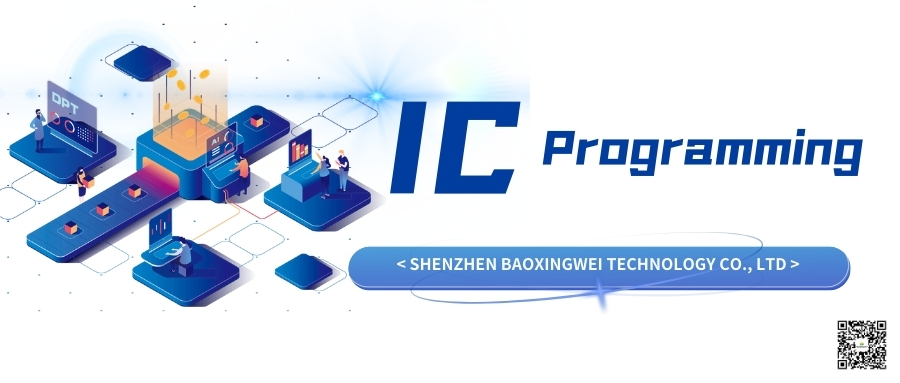News Centerposition:Baoxingwei > News Center > 正文
Knowledge corner|What is IC Programing
Edit:Baoxingwei Technology | Time:2024-01-04 11:47 | Number of views:114
Today we will learn about IC Programing together.IC Programing, in short, is the process of writing information or programs into integrated circuit (IC) chips. It is usually achieved through dedicated programmers or programming devices, which use electrical signals to write binary data into the chip. Now, why do we need IC Programing? Let me explain it in detail.
The purpose of IC Programing is two-fold
Firstly, during the IC manufacturing process, IC Programing plays a critical role. For example, the CPU chip used in smartphones doesn't have any program inside if it hasn't been burned. This means that your phone won't be able to run applications or make calls or connect to networks. A burned CPU chip will be embedded with specific software programs to enable these functionalities.
Secondly, IC Programing satisfies the customization needs of customers. Different electronic devices often require different functions and data. For instance, IoT chips used in smart homes need to work in coordination with specific smart home devices. Through burning, we can write customized programs and information into the chip, allowing it to connect properly with specific home devices, thus achieving the goal of IoT-based intelligence.
Besides, IC Programing also facilitates upgrades and repairs. We've all experienced situations where our phones run out of battery and shut down or certain applications crash. The usual solutions like restarting the device or uninstalling faulty applications are effective for software issues but may not address fundamental problems in some cases. IC Programing technology provides us with a more powerful solution. Through burning, we can update or repair programs in the chip, resolving problems with the device and the chip itself. Compared to just restarting or uninstalling applications, IC Programing can repair specific sections, improve device stability, and reduce maintenance costs.
How can we determine if a chip has been burned or not
Generally, we cannot directly observe and determine it from the appearance or external factors. However, there are some indirect methods to detect whether a chip has been burned. For example, you can check the CPU and chip vendor logos to ascertain if it has been burned. Additionally, there are professional electronic device analysis tools such as scanning probe microscopes, X-ray diffraction analyzers, or electronic data acquisition devices that can detect the internal structure and material characteristics of the chip, thus determining if it has been burned.
The classification of burnable ICs.
ICs can be divided into two categories: burnable and non-burnable. Burnable ICs have programming capabilities, allowing programming and burning during production or usage. For instance, Flash memory can be burned with firmware files in televisions, enabling them to be updated with new features and functionalities. On the other hand, non-burnable ICs, such as Read-Only Memory (ROM) chips and One-Time Programmable (OTP) chips, are programmed or configured only once during the manufacturing process and cannot be modified thereafter. For example, remote control chips for some digital home products or chips used in cars for driving records and in-car entertainment are typically ROM chips, and once they are produced, the software or data inside cannot be modified. This belongs to the non-burnable category. Additionally, smart card chips used in banks and financial institutions, including bank cards and identity cards, are usually ROM or OTP chips, with information permanently stored and unchangeable.
In conclusion, different types of IC programming and burning have their specific burning methods and processes. Different chip types and applications may require different programmers and technologies.




